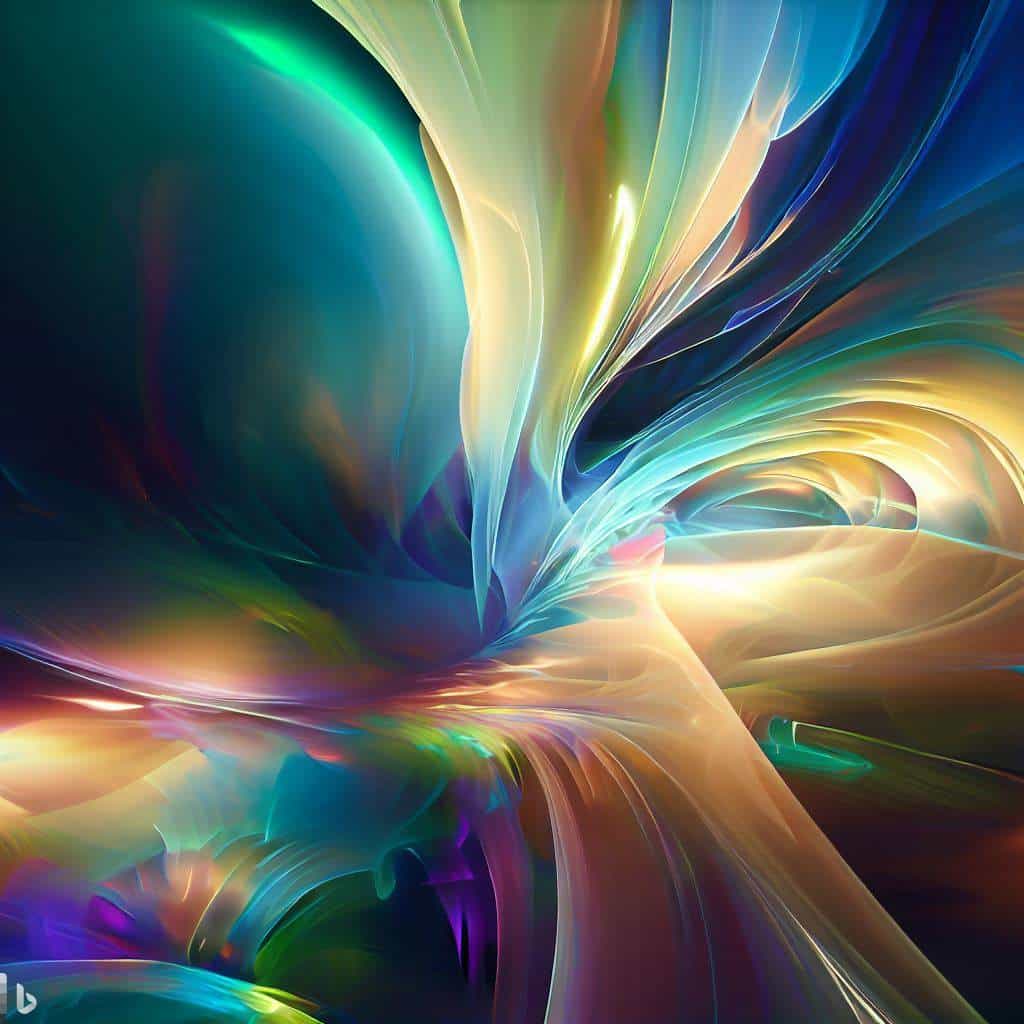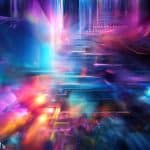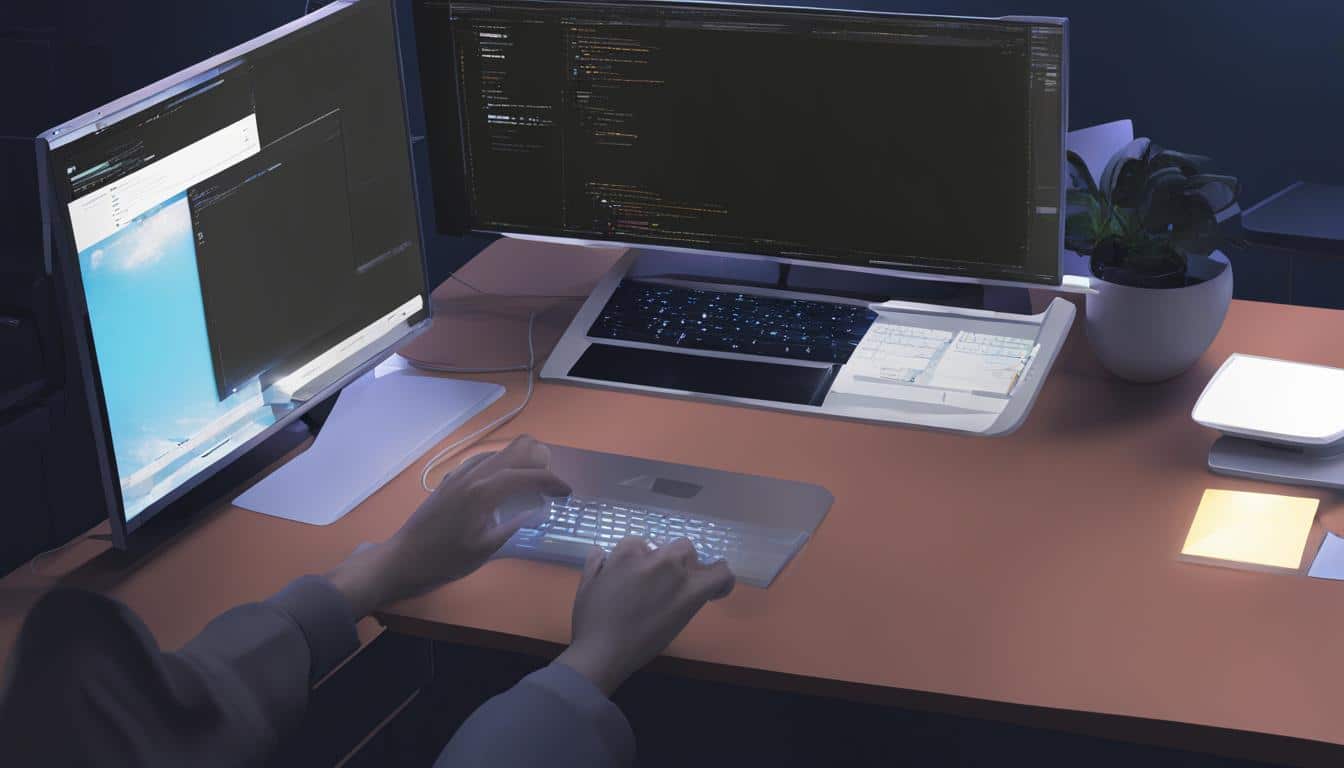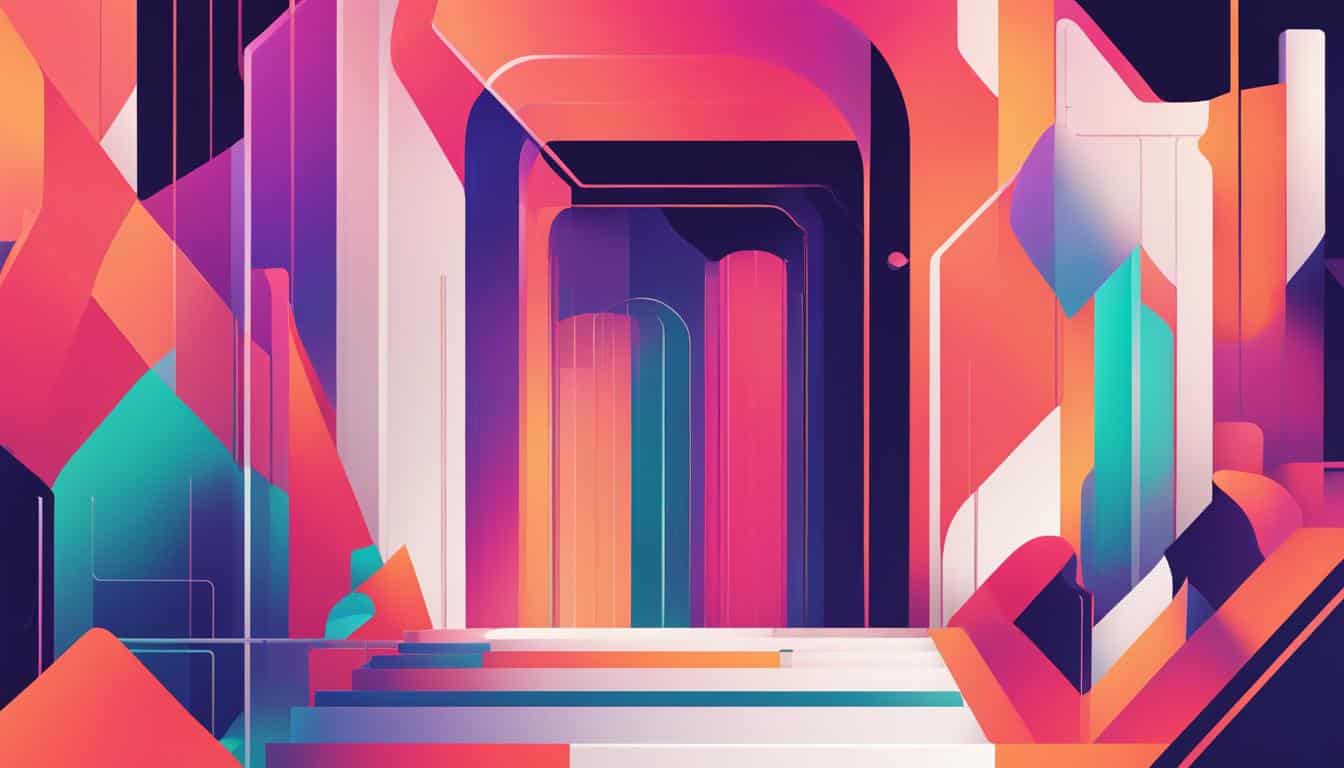Overview of Generative Art
Generative art is a special type of art that is generated automatically. It can result in unique, unpredictable outcomes. Python coding language makes creating generative art a breeze. To create it, one must understand the basics of programming and Python’s syntax. Libraries like Pygame, NumPy, and PIL are useful for creating fractals, patterns, and abstract art. Python can also analyze data sets and transform them into visual representations.
Generative art is becoming more popular as it produces visuals that are hard to recreate manually. Using Python code, it provides an alternative to traditional methods. Unleash your creativity with this exciting field! With endless possibilities in terms of colors, shapes, patterns and forms, you’re sure to find inspiration.
Get started today – don’t miss out on this fantastic opportunity! Python’s easy-to-use coding language and its libraries make creating generative art simple. Follow these easy steps to set up your environment and you’ll be coding like a Python pro in no time!
Setting Up Python Environment
To set up your Python environment for generative art creation, installing the required Python libraries and becoming familiar with generative art tools in Python is crucial. In this section, we’ll guide you through these essential sub-sections to ensure that your Python environment is ready to create the stunning generative art.
Installing Required Python Libraries
Ensure your Python environment is set up correctly! Here’s a guide:
- Open the command prompt or terminal.
- Type “pip install [library name]” for each library.
- Press enter.
- Wait until installation is complete.
- Test the libraries to make sure they are installed correctly.
Some libraries may require extra installations, such as compilers or dependencies. Read the documentation thoroughly before installing any module/library.
Keep your libraries up-to-date to ensure security and optimal performance. Update libraries with “pip install –upgrade [library name].”
Don’t skip installing necessary libraries. Errors, malfunctions and productivity loss may occur. Follow the guide to make sure all required libraries are installed correctly.
Create awesome art with these Python generative art tools!
Introduction to Generative Art Tools in Python
Python provides many tools for creating generative art. With random number generation, shape manipulation and algorithm design, artists can create unique and interactive pieces. These tools open up exciting possibilities for creativity.
By using Python’s libraries such as Pillow, Processing.py, OpenCV-Python and PyCairo, artists can create stunning visuals. A few lines of code, plus some basic programming knowledge, enable complex compositions.
Python’s power lies in automating repetitive tasks, allowing artists to focus on the creative side. Python can handle anything from simple shapes to complex animations. Generative art is unique due to its combination of randomness and control.
Pro Tip: To have granular control over your Python program, make use of conditional statements. Let’s get creative – creating basic shapes with Python is easier than drawing!
Creating Simple Shapes
To create simple shapes in generative art, you can use Python, and in this section with the title ‘Creating Simple Shapes’, two sub-sections will be discussed as the solution: ‘Generating 2D Shapes with Python Code’ and ‘Adding Colors and Textures to Shapes’. By implementing the techniques discussed in these sub-sections, you will be able to create aesthetically pleasing 2D shapes with different colors and textures.
Generating 2D Shapes with Python Code
Python Programming Language can be utilized to generate 2D shapes in a programmatic way. To do this, code must be written with clear instructions which determine the shape’s color, width, position, and height.
Here are five steps to make those shapes with Python:
- Import Turtle: Turtle module offers a pen-like tool to make shapes.
- Create Turtle Screen: Utilize turtle.Screen() command to create a canvas.
- Create a ‘Turtle’ object: A turtle is an inbuilt module in python that makes graphics using turtles. Make turtle.Turtle().
- Draw Shape: Commands for Drawing shapes are given using predefined methods like turtle.forward(), turtle.backward() for making lines.
- Exit Window: Once the shape is done, exit the window by calling turtle.done().
To add complexity, you can have loops, functions, and use libraries like Pygame or Pillow for more features.
Pro Tip: Use Python Code to make 2D Shapes a part of games or simulations to interact with users.
Go ahead and give your shapes some “bling” by adding texture and color.
Adding Colors and Textures to Shapes
Coloring and texturing are key for designing shapes. They express the mood and message behind them. Add depth and realism to flat shapes with textures. Utilize colors to manipulate emotions with subconscious reactions.
Choose the right colors that complement each other based on theory, temperature, or culture. Create abstract textures digitally, or use real-world objects for organic textures. Employ shading tools for shadows, highlights, gradients, and volume effects.
Color and texture in design influence behavior. A study found that colored visuals increase retention rates up to 55%. So, why settle for basic shapes? Generate art with these advanced techniques! Wow your friends and baffle your foes.
Source: Pexels.com
Advanced Generative Art Techniques
To take your generative art to the next level, you need advanced techniques that go beyond basic coding skills. In order to achieve this, the section ‘Advanced Generative Art Techniques’ with ‘Using Mathematics and Algorithms to Generate Complex Shapes’ and ‘Implementing Randomness and Probability in Artwork’ as solutions, is what you need. These sub-sections will teach you how to use mathematical and algorithmic methods to create complex shapes, and how to add an element of surprise by harnessing randomness and probability in your artwork.
Using Mathematics and Algorithms to Generate Complex Shapes
Mathematical and Algorithmic Techniques for Complex Shape Generation
Generative art is becoming more popular. Mathematical equations and algorithms are proving useful to create intricate designs.
Check out these techniques to generate complex shapes:
| Technique | Example |
|---|---|
| Fractals | Koch Snowflake |
| L-systems | Lindenmayer’s Algae |
| Voronoi Diagrams | Delaunay Triangulation |
| Cellular Automata | Game of Life |
These techniques don’t just make static images. They can also create dynamic animations that change over time. Endless possibilities for artistic expression!
Creating an Emotional Call-to-Action for Readers
Explore new creative techniques by learning mathematical concepts and algorithms. Unlock an exciting element of complexity and depth to your artwork. Art isn’t just random strokes, it’s chaos with a purpose – like probability in your love life.
Implementing Randomness and Probability in Artwork
Generative art is a technique where randomness and probabilities are implemented, allowing artists to create unpredictable outcomes and unique pieces. Advanced algorithms are used to introduce the element of randomness in the artwork. With the help of stochastic procedures, an artist can even have control over the perceived randomness. Incorporating probabilities yields surprisingly pleasing haphazard arrangements which can be used to experiment with variables like color schemes or shapes.
The utilization of probabilities in generative art gives artists an opportunity to innovate and push boundaries in art. Salvador Dali used mathematical concepts to do so throughout his career. Generative art works provide an element of surprise to both the artist and their audience. Plus, it’s like sharing secrets with the world, since everyone knows how it was made.
Outputting and Sharing Artwork
To output and share your generative art created using python, you need to follow a few simple steps. This section ‘Outputting and Sharing Artwork’ with its sub-sections; ‘Saving Generated Artwork as Images or Videos’ and ‘Uploading Artwork to Online Galleries and Communities’ will guide you through saving your artwork as images or videos and sharing it on various online galleries or communities.
Saving Generated Artwork as Images or Videos
Are you ready to save your artwork as images or videos? Follow these easy steps:
- Click ‘Export’ on your software interface.
- Select a file format: JPEG, PNG, TIFF, BMP for images, MP4, AVI or MOV for videos.
- Choose resolution and size for your file.
- Click ‘Save’ and pick the preferred location.
- Preview video files before sharing.
- Share your artwork with joy!
Some software may offer extra settings like frame rate, aspect ratio and codec type.
When deciding which file format is best, try viewing the artwork at different resolutions.
Fun Fact: In 1991, Steve Wilhite of CompuServe introduced GIF. It was popular for its ability to compress images into small files without losing quality. Later, other formats like PNG and JPEG were developed to add more dynamic features.
Sharing your artwork is like sending your child off to college. You want them to be successful and make a name for themselves!
Uploading Artwork to Online Galleries and Communities.
Sharing art online with galleries and communities can boost an artist’s visibility. Platforms offer a great option for artists to show their work, gain followers, and even sell. No need to buy pricey gallery spaces.
When uploading art, make sure the images are top-notch and portray the piece accurately. Use detailed descriptions, tags, and titles so the work can be found via keyword searches.
DeviantArt, Behance, Dribble, Flickr, 500px and Instagram are popular platforms for sharing art. Each one has unique features and an audience that artists can consider for their goals.
Did you know? A 2019 Art Basel and UBS Global art mark
Q: What does generative art mean?
A: Generative art refers to the type of art that is created through the use of a set of instructions or an algorithm in a computer program.
Q: How can Python be used to create generative art?
A: Python can be used to create generative art by writing code that generates random values and uses them to manipulate graphics.
Q: What level of expertise do I need to create generative art using Python?
A: While some knowledge of computer programming and Python is useful, there are also tutorials available for beginners that provide step-by-step instructions on how to create generative art projects.
Q: Can generative art be created using only Python’s built-in functions?
A: Yes, generative art can be created using only Python’s built-in functions. However, using external libraries such as numpy and matplotlib can make the process more efficient and allow for more complex graphics.
Q: How is randomness integrated into generative art created with Python?
A: Randomness is integrated into generative art created with Python by using functions or methods that generate random values, which can then be used to modify the graphic.
Q: What kind of graphics can be created with generative art using Python?
A: Generative art created with Python can range from simple geometric shapes to complex, abstract patterns.
Q: What is interpolation, and how is it used in generative art created with Python?
A: Interpolation is the process of estimating values between two known values. In generative art created with Python, interpolation can be used to create smooth transitions between different colors or shapes.
Q: What are the basic steps to create a generative art project using Python?
A: The basic steps to create a generative art project using Python are: define the starting point, write simple rules to modify the graphics, test and modify the code until the desired result is achieved, and plot the final image.
Q: How can I represent graphics using coordinates, such as x and y values?
A: Graphics can be represented using coordinates such as x and y values by creating an array or grid of pixels, where each pixel represents a coordinate. The x coordinate represents the column and the y coordinate represents the row.
Q: What are some best practices for creating generative art using Python?
A: Some best practices to keep in mind when creating generative art using Python are: start with simple rules and gradually complicate them, use randomization to add unpredictability to the graphic, balance predictability and randomness to create a structured yet fascinating image, and modify code iteratively instead of trying to create a perfect image in one go.










